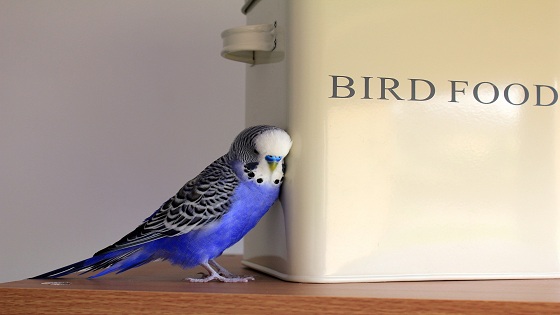There are all kinds of ways to feed birds, from bird tables and hanging feeders to devices you can make yourself.
Bird Tables
Bird tables are suitable for many species and most foods. A simple tray is perfectly adequate, with or without a roof. It needs a raised rim to retain the food and a gap at each corner of the rim to allow rainwater to drain away and allow you to clean away droppings and uneaten food. Do not be tempted by elaborate designs that are difficult to clean.

Feeders
Nut feeders are made of steel mesh and are the only safe method of offering nuts to wild birds. The mesh size needs to be large enough to prevent beak damage and small enough to prevent large pieces of nut from being removed – about 6 mm is a good compromise.
Seed feeders are tubular transparent containers with holes, through which birds are able to access the seed. These are designed for sunflower seeds and seed mixes labelled feeder seed. They will attract tits, siskins and greenfinches.
Niger feeders are designed specifically for this small black seed. These seeds are particularly popular with goldfinches and siskins. Hopper types with trays or flat surfaces are suited to general cereal based mixes, although any seed mix can be used. They will attract a similar range of birds to a bird table. Make sure that all feeders drain easily and do not allow the build-up of old food with the associated health risks.

Home-Made Devices
Half-coconuts and tit bells filled with fat, bird cake, etc can be hung from your bird table, a tree or from a bracket on a wall. Half-coconut is the bird food which will attract greenfinches, house sparrows and tits.
Other ideas
Fill the holes and cracks of a post or suspended log with fatty food, such as suet, for agile birds, such as tits, nuthatches, woodpeckers, treecreepers and even wrens.
Thrushes and dunnocks prefer to feed on the ground. For these birds, scatter food on the lawn or use a ground feeding tray or hopper well clear of cover to avoid lurking cats. Remember to change the area you scatter the food over every few days, and never put out more than is eaten the same day to avoid attracting vermin.
If you put food such as apples and bread on the ground, space it out in different places in the garden. This will reduce competition between birds so that more birds can feed at any one time. If there is snow on the ground, clear small areas before putting down the food.
If you have a garden, consider planting items for wildlife to feed on or take shelter in.

Mesh Bags – A Warning
Peanuts and fat balls are regularly sold in nylon mesh bags. Never put out any food in mesh bags. These may trap birds’ feet and even cause broken or torn off feet and legs. Birds with a barbed tongue, eg woodpeckers, can become trapped by their beaks.
 Kaboutjie SA Mommy Blogs by Lynne Huysamen
Kaboutjie SA Mommy Blogs by Lynne Huysamen





What we usually do is roll a pinecone in peanut butter the wild bird seeds. Hang them up on verandah or in a tree and voila 😁
That’s an awesome idea! Thanks for sharing @zimbos2